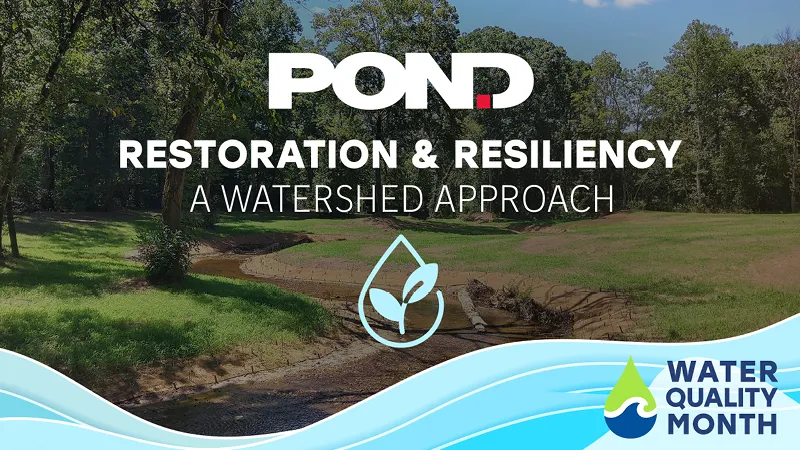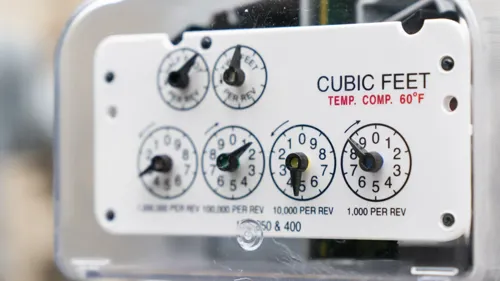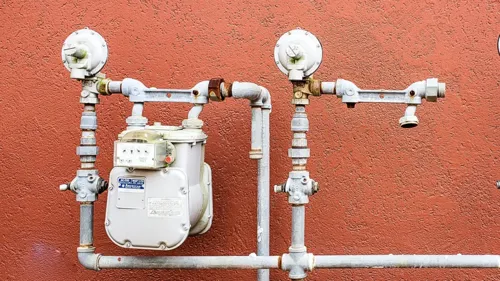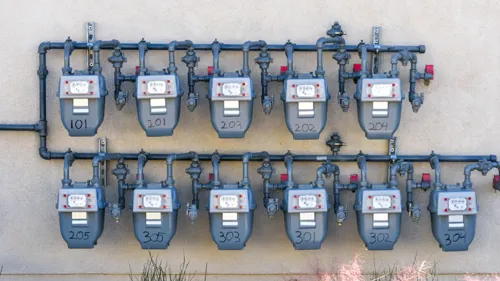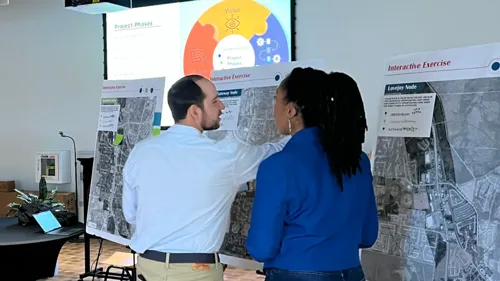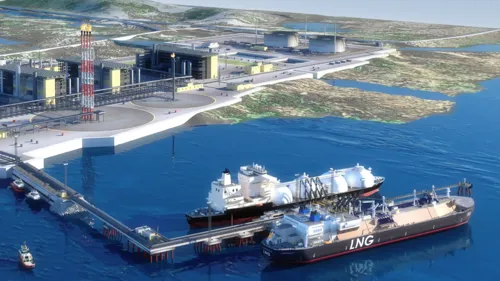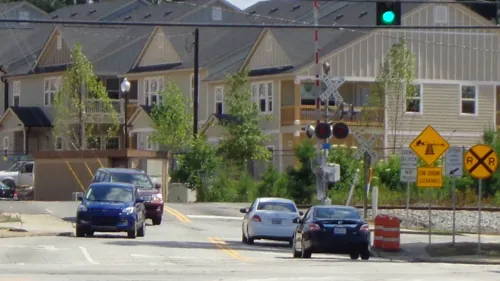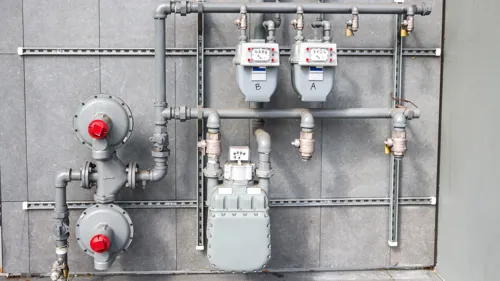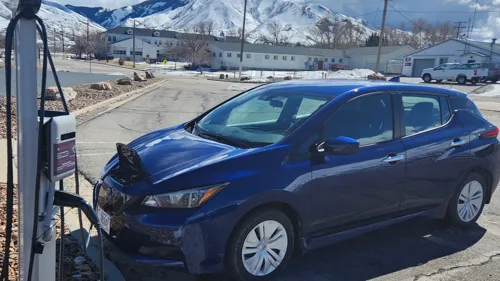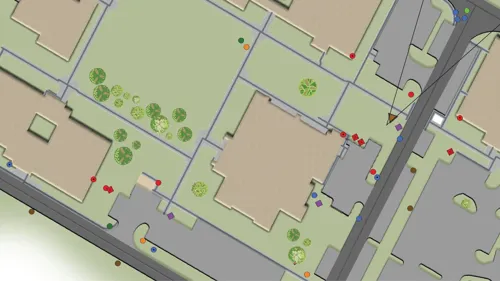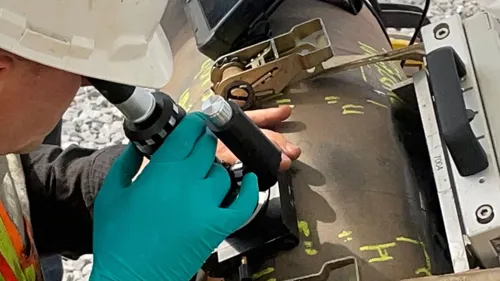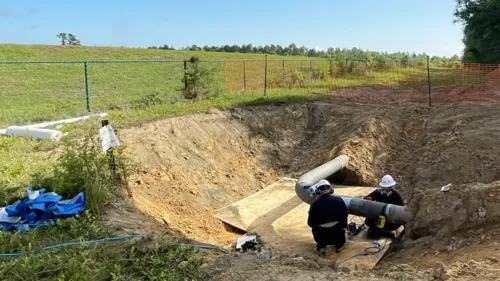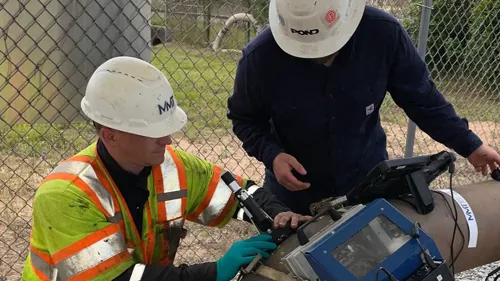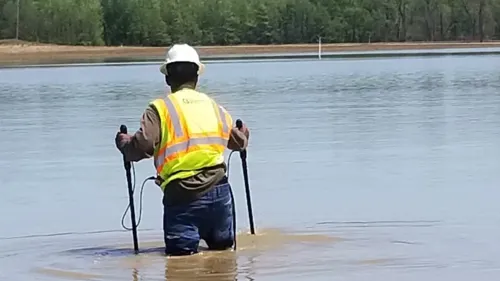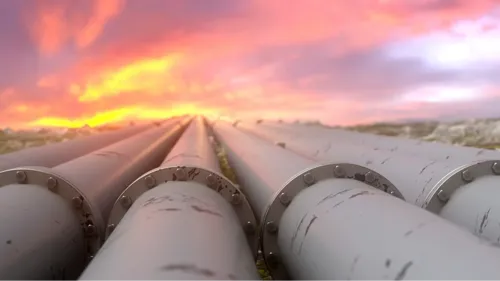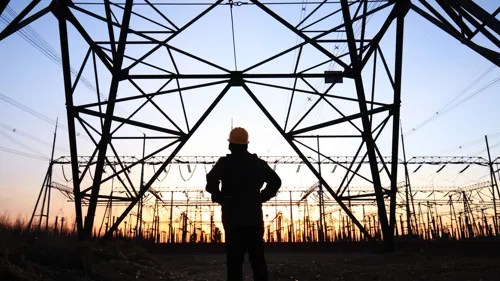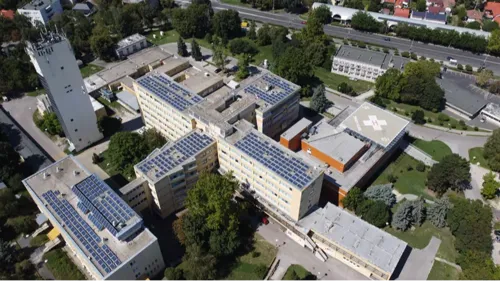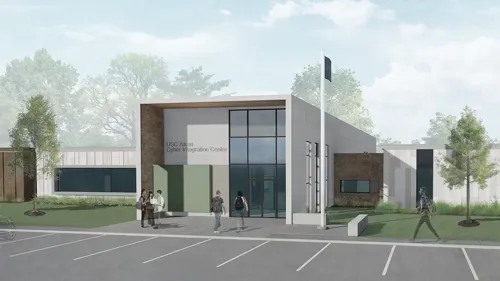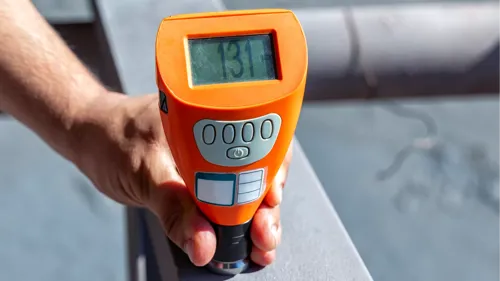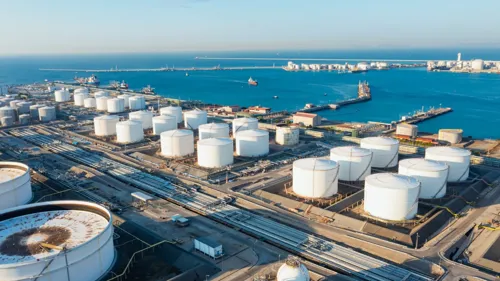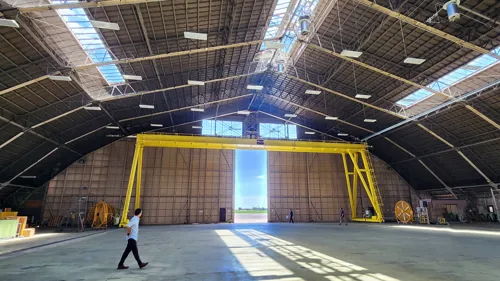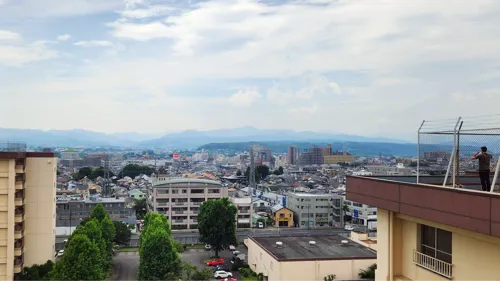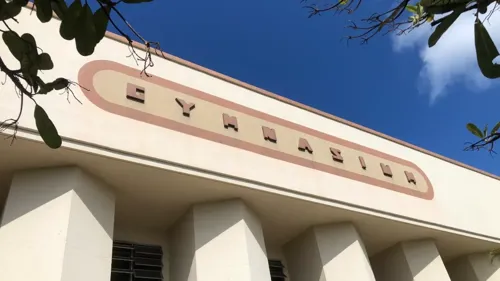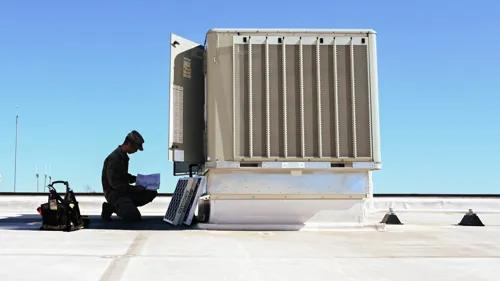Designing Electrical Substations for a Modernized Energy Grid
Author:
Ayesha Ghazanfer | Substation Manager – Power Delivery | [email protected]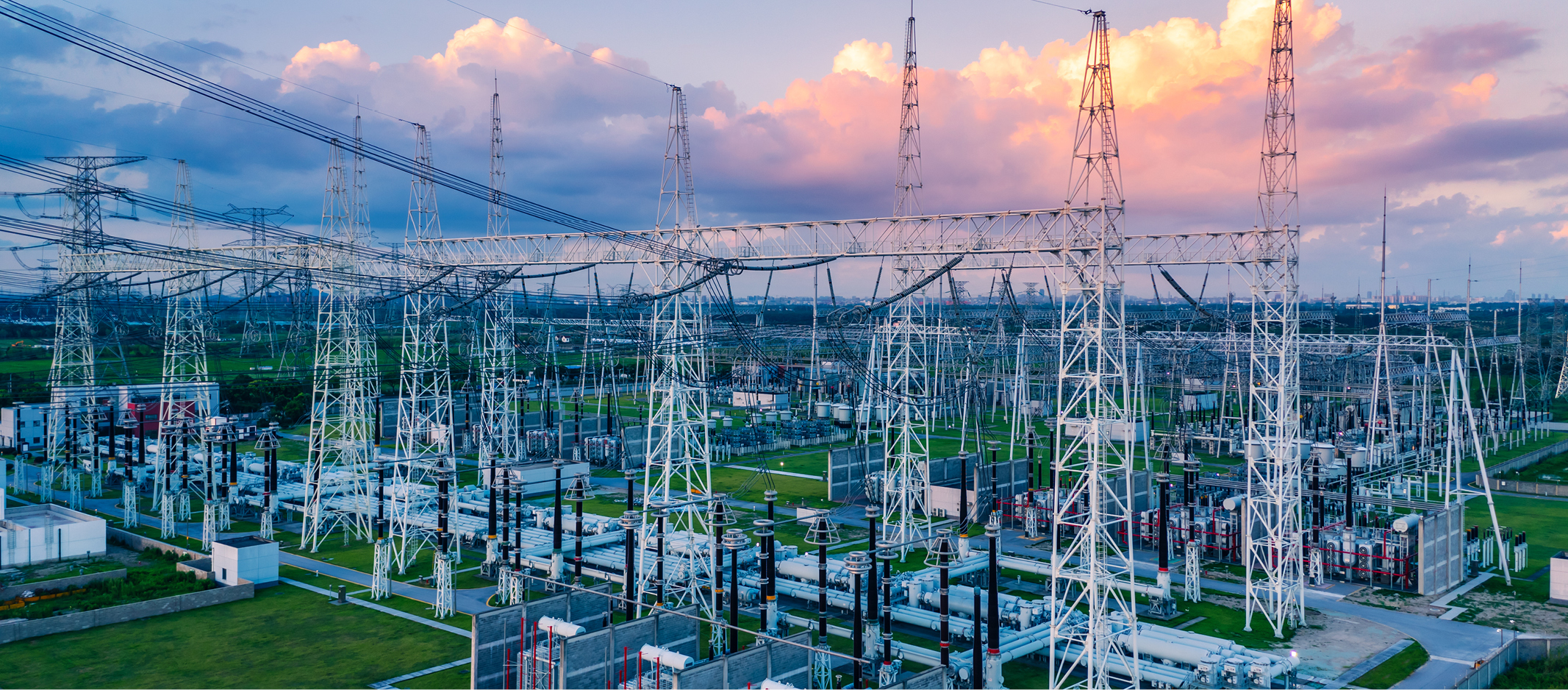
Electricity is a fundamental aspect of our daily lives and is one of the most common types of energy. Electrical substations are specifically designed to transmit and distribute electricity to power various infrastructures such as homes, schools, businesses and factories. They are crucial components of the power grid, and without them, the flow of power from where it is generated to where it is consumed at homes and businesses could not occur.
How Substations Fit Into a Modernizing Power Grid
Modernizing the energy grid is essential for meeting the demands of a rapidly evolving society. Upgrading infrastructure, integrating renewable energy sources, implementing smart technologies for efficient management, and enhancing resilience against disruptions are all key components of grid modernization efforts.
In 2023, President Biden set an ambitious goal of achieving a carbon pollution-free power sector by 2035 and a net zero emissions economy no later than 2050. This aligns with the Department of Energy’s (DOE) Grid Modernization Initiative, a department-wide collaboration to make the US power grid more affordable, resilient and sustainable.
According to the DOE, a modern grid must have greater resilience to hazards of all types, improved reliability for everyday operations, enhanced security from an increasing and evolving number of threats, additional affordability to maintain economic prosperity, superior flexibility to respond to the variability and uncertainty of conditions, and increased sustainability through energy-efficient and renewable resources.
Substations are evolving with advanced technologies like smart grids and renewable energy integration, improving reliability and efficiency. They’re becoming more resilient to extreme weather and cyber threats, integrating energy storage, remote monitoring, and data analytics for optimized operations and maintenance.
Substations are evolving with advanced technologies like smart grids and renewable energy integration, improving reliability and efficiency.
What is an Electrical Substation?
An electrical substation is a crucial nexus connecting various stages of the electricity delivery process, including generation, transmission, and distribution. Substations receive electricity from a larger energy source, such as a power plant or renewable energy facilities, where electricity is generated. These plants convert various forms of energy (such as natural gas, coal, wind, nuclear, hydroelectric, or solar) into electrical energy to produce electricity on a large scale.
To efficiently transmit the electricity produced at the plant, it must be stepped up to a higher voltage to help reduce the losses as it travels great distances. This is where substations come in. These facilities convert electricity into different voltages to be safely transmitted throughout the country and then distributed to local neighborhoods, homes, businesses and buildings. This is made possible by transformers.
Transformers are large pieces of equipment that transfer electrical energy by changing magnetic fields. Inside of them are two or more coils and the difference in how many times each coil wraps around the metallic core will dictate the change in voltage.
Apart from adjusting voltage levels, substations also act as strategic control points in the power grid. They can redirect power, split it into multiple routes, or isolate sections of the grid in case of malfunctions or emergencies. Substations ensure that every part of the power grid receives the appropriate amount of electricity at the correct voltage, in alignment with the operational needs and stability requirements of the system.
Types of Substations
Electrical substations can be classified into several types, most typical are transmission and distribution, based on their voltage level, locations and functions within the power grid but they all have the same purpose: supporting electricity generation, transmission, and distribution.
Transmission substations are the largest and most complex electricity substations. Typically operating between 69kV to 765kV or higher, they are responsible for transmitting electricity across long distances and serve as checkpoints for electricity to be distributed across wider areas. These substations convert or “step up” the voltage of electricity for efficient long-distance transmission. Transmission substations are where circuits connect, creating a network for energy to flow at high voltages.
Distribution substations are responsible for electricity distribution to the customers within electricity grids. These substations operate at a lower voltage compared to transmission substations, typically ranging from 12 kV to 34.5 kV. They convert or “step down” the voltage from the transmission level, switch electricity from one electricity line to another, and monitor electricity flow so electricity outages can be quickly identified.
Some other common types of substations are step-up, step-down, switching, converter, mobile, and compact substations.
Substation Design
Designing a substation involves several critical components and considerations to ensure the efficient and safe transmission and distribution of electrical power. The scope of a substation project will look at the purpose of the substation, capacity requirements based on load forecasts and growth projections, and the location for the substation considering factors like proximity to load centers, accessibility, environmental impact, and land availability.
Once the scope is identified, a series of electrical system analyses will take place to assess the current infrastructure and determine the selection of substation configurations. These include load flow analysis to determine voltage levels, load distribution, and power flow requirements; short-circuit studies to evaluate fault currents and determine protective device ratings; transient and voltage stability to ensure the reliability of the system under various operating conditions, grounding studies and lightning studies.
Like any steel structure, substations are susceptible to corrosion. Cathodic protection can control the corrosion of metal by making it the cathode of an electrochemical cell. To do so, the structure is connected to a more easily corroded “sacrificial metal” to act as the anode, which will corrode instead of the protected structure.
The physical design and configuration of the substation also consider factors like equipment placement, clearances, safety and ease of maintenance. The functional requirements of the substation equipment will determine the configuration of transformers, circuit breakers, switches, busbars, and grounding systems. The design also ensures the equipment specification and sizing account for current ratings, environmental conditions and compliance with industry standards.
Protection & Control
Substation facilities also require protection and control (P&C) engineering to protect the equipment and the public and prevent abnormal operating conditions while also employing certain corrective actions.
Protective relay systems detect defective equipment or other dangerous operating conditions and quickly minimize disruptions in a prescribed manner. These relays are designed to protect specific zones of the substation. Each zone corresponds with a different function of the power system, including generators, transformers, motors and buses. Oftentimes zones will overlap, reinforcing the idea of having primary and secondary protection.
Substations are monitored using Supervisory Control and Data Acquisition (SCADA) systems to automate repetitive work and support the burden of 24/7 supervision from humans. SCADA is used to control, monitor and analyze the substation equipment and ensure everything is functioning properly and provide alerts and support corrective actions when needed.
About Pond
Pond’s experienced team of engineers and planners provides cutting-edge solutions tailored to address the evolving needs of utilities. Pond offers end-to-end services, encompassing feasibility studies, engineering design and procurement for substations. Whether the objective is to fortify the reliability and resilience of existing systems or to integrate innovative technologies and data analytics in new projects, Pond provides expertise to support our clients’ substation solutions. Whether it’s greenfield or brownfield projects, we provide efficiency, reliability, and effectiveness in addressing substation challenges. Learn more about Pond's full-suite power delivery capabilities.



